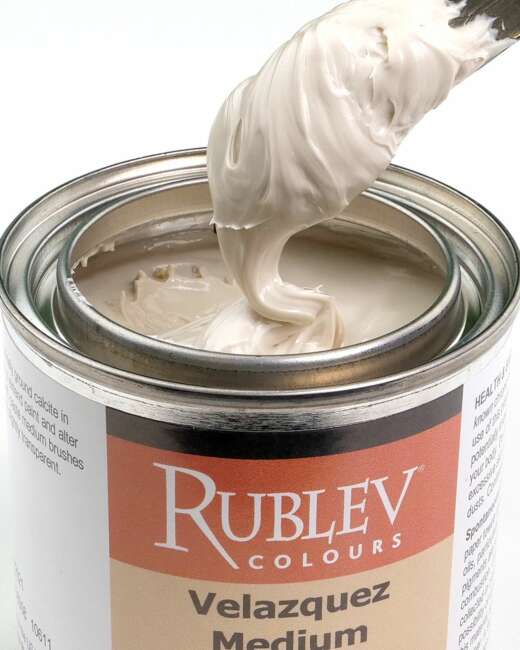
The sad news about the recent conviction of Odd Nerdrum for tax evasion made me think about the merchantability of paintings.
The 67-year-old Norwegian-born artist was accused of failing to pay taxes on €1.8 million of taxable income from sales between 1998–2002, just before he became an Icelandic citizen.[1]
The court defined the crime as aggravated fiscal fraud because the artist “put significant work into hiding his assets, especially by placing a large quantity of money in a safety deposit box.”
Odd Nerdrum claimed that the money was set aside against claims on large paintings he made in the 1980s with an experimental medium of mastic and linseed oil. After several years, collectors complained that they began to melt when exposed to heat. Though he generously painted 36 new paintings of the same images between 1989–2002 to replace the damaged paintings, many collectors wanted to be compensated with money instead of new paintings.[2]
Both Nerdrum and his defense attorney, Tor Erling Staff, claimed that the money found by Norwegian tax authorities in an overseas bank account, along with proceeds from a U.S. gallery, had been set aside to cover possible compensation claims by customers whose paintings had been ruined due to the failed medium.[3]
Many artists today are increasingly concerned about the condition of their artworks as they age. In the past century, the idea that artworks should be constructed to last a long time was considered prosaic. Craftsmanship or work quality was dismissed as the antithesis of creative activity. Art instructors deplored technique in favor of creativity, even to its exclusion entirely.
The result is that many artists today, even the most admired masters, are lost in a quagmire of formulas, technical receipts, and anecdotes. Late in their careers, they continue to stumble on technical issues—Odd Nerdrum’s mastic medium being a clear example of this problem facing artists.
Yet if a professional and selling artist does not wish to include longevity as part of their artwork, the issue of merchantability may eventually bite the artist in the pocketbook.
The warranty of merchantability in a sale of goods is implied unless expressly disclaimed, such as with the phrase “sold as is.” (I cannot imagine a work of art being sold by an artist with the disclaimer “as is,” much less so by a gallery.) To be “merchantable,” the goods must reasonably conform to a typical buyer’s expectations, i.e., they are what they say they are. For example, fruit that looks and smells good but has hidden defects would violate the implied warranty of merchantability if its quality does not meet the standards of fruit that “passes ordinarily in the trade.” Some states in the U.S. do not even allow disclaimers. In Massachusetts’ consumer protection law, for example, it is illegal to disclaim this warranty on household goods sold to consumers.
Most art buyers likely expect a work of art to last throughout their lifetime in the general condition when they purchased it. Some might even contend it should continue its life in the collection of its heirs. Yet, many contemporary masterpieces, especially those of the 20th century, are falling apart and are badly in need of restoration—some are not fit for display.
Education about artists’ materials, techniques, and methods emphasizing craftsmanship should be part of an artist’s early training. The information is available but not readily accessible to artists. It is unlikely we shall return to a system of apprenticeship that served the old masters well. Still, at least colleges, universities, and academies could include more rigorous training in this area.
Perhaps this is why we are seeing the rise in popularity during the past decade of ateliers and art leagues where instruction on such technical aspects of drawing and painting are requirements for continuing education.
It would be interesting to learn details of the medium used by Odd Nerdrum that resulted in the catastrophic failure of his paintings in the 1980s. One clue is provided by the artist’s wife, Turid Spildo, in her Internet blog:
“The mastic that he and his students had experimented with was not good. Later, he realized that the mastic probably was from young trees and not from old trees like it always had been before… Because of this the resin triggers a meltdown…”[4]
This explanation seems unlikely, but in a future post, I will examine the history of mastic and its properties in oil painting, including its collection, use, and aging in the paint film.
References
1. “Controversy Follows Conviction of Artist Odd Nerdrum for Alleged Tax Fraud,” Art Daily.com, http://www.artdaily.com/index.asp?in...&int_new=49936
2. “Odd Nerdrum Sentenced to Two Years in Prison,” Art Babel, August 17, 2011, http://artbabel.blogspot.com/2011/08...-years-in.html
3. “Artist Odd Nerdrum sentenced to jail,” Views and News from Norway, August 17, 2011, http://www.newsinenglish.no/2011/08/...enced-to-jail/
4. “War Report 16.08.2011,” Turid Spildo, http://spildo.blogspot.com/2011/08/w...-16082011.html


